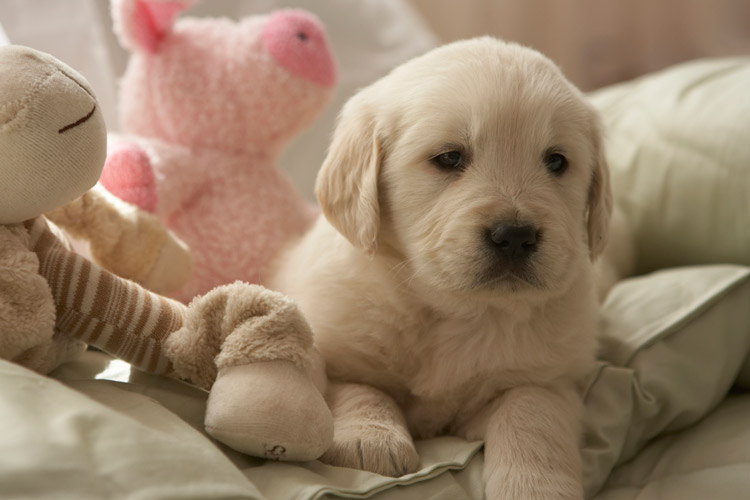Dog hair covering your clothes and furniture is an annoying downside to pet ownership. While no dog is truly non-shedding, there are ways to significantly how to stop dog from shedding excessively and keep cleanup under control.
In this article, we’ll overview the dog shedding process and provide actionable tips to reduce hair loss in dogs. Let’s tackle this hairy problem!
Understanding the Shedding Cycle
Before reducing shedding, it helps to understand what prompts dogs to lose hair in the first place.
Shedding is a natural process allowing dogs to discard old, damaged hair and grow a new coat. The cycle consists of:
Anagen phase: Active hair growth where follicles rapidly produce new hairs. Lasts 2-6 years.
Catagen phase: Signals the hair follicle to stop producing hair as it enters a transition stage. Lasts 2-3 weeks.
Telogen phase: The rested phase where old hairs detach from the follicle and shed out at the club root. Lasts 2-4 months.
Exogen phase: The period where hair is actively shed from the body.
This cycle continuously repeats, resulting in shedding. The phases vary across dog breeds and coats. But shedding itself is unavoidable. The goal is controlling excess loss.

Factors That Increase Shedding
While shedding maintains coat health, certain factors exacerbate hair loss:
- Temperature changes – Hot and cold weather shifts alter hormones impacting shedding cycles.
- Sunlight hours – More daylight hours in summer/spring trigger increased shedding.
- Age – Puppy coats transition around 6 months. Senior dogs shed less.
- Pregnancy/nursing – Hormone changes increase shedding.
- Seasonal coats – Heavy shedders like Huskies and GSDs blow coat twice yearly.
- Stress – Stress hormones result in excess shedding due to hair follicle sensitivity.
- Poor nutrition – Low protein or deficiencies force coat thinning to conserve resources.
You can’t control the seasons or your dog’s age. But managing other factors can reduce shedding overall.
Nutrition Tips to Minimize Shedding
Providing proper nutrition is key to minimizing shedding and promoting coat health:
- High quality proteins – Feed premium dog food with meat proteins as the first ingredient. Avoid grains.
- Essential fatty acids – Omega-3 and 6 oils support skin and coat growth. Add fish, chia or flax.
- Zinc and selenium – Important minerals for tissue growth and repair. Feed meats, eggs, seeds.
- Vitamin C and B-complex – Aid metabolism and follicle development. Offer fresh veggies/fruits.
- Digestive enzymes – Improve nutrient absorption. Give natural enzyme supplements.
- Anti-inflammatory foods – Reduce skin irritation driving shedding. Add omega-3s, turmeric, green leafy veggies.
Feeding a balanced, premium diet optimized for your dog’s needs provides the building blocks for maintaining a healthy coat.

Grooming Tips to Reduce Shedding
In addition to diet, proper grooming cuts down on shedding:
- Brush regularly – Frequent brushing lifts dead hairs before they shed onto carpets and furniture. Use an appropriate slicker or undercoat rake for the coat type.
- Bathe occasionally – Bathing loosens the old undercoat so it washes away rather than sheds out later. Use a moisturizing shampoo.
- Remove mats/tangles gently – Detangle coats patiently to avoid damaging the tender skin beneath. Never shave matted fur.
- Trim overhanging fur – Neatening feathering helps prevent matts and tangling which lead to breakage.
- Dry thoroughly – Blow drying after washing fluffs up the coat and allows brushing to remove more dead hair easily.
Proper grooming prevents excess tangling and damaged hairs from accumulating in the coat. A little grooming goes a long way for shedding relief.
Shedding Prevention Products
Specialized products may also assist:
- Shed relief shampoos – These formulas contain oils, aloe, and vitamins to loosen shedding coats while bathing.
- Dematting sprays – Lightly misting allows combs to glide through snarls with less pulling.
- Shed reduction supplements – Products containing omega fatty acids, vitamin C, zinc, saw palmetto may minimize shedding.
- De-shedding tools – Specially designed combs lift loose hairs and stimulate the coat for easier removal.
- Balanced diets – Some prescription foods are formulated to reduce shedding. Discuss with your vet.
Always follow product instructions carefully and stop use if any skin irritation develops. Introduction slowly when trying supplements.

When to See the Vet About Shedding
Schedule a veterinary visit if your dog has:
- Patchy hair loss or thinning
- Red, flaky or irritated skin
- Pigment changes to nose/lips/eyelids
- Sudden excessive shedding
- No shedding for months
- Hair loss paired with lethargy or appetite changes
Skin infections, hormonal disorders like Cushing’s disease, and other issues may prompt abnormal shedding requiring medication. Diagnosis and treatment of underlying problems is key.
Shedding Reduction Tips
A few additional pointers that provide relief:
- Use washable pet-safe furniture covers and vigilant vacuuming. Pretreat carpets.
- Give an approved dry shampoo between full baths.
- Try shedding blade brushes. Their fine combs remove loose undercoats easily.
- Increase omega-3 rich foods during peak shed seasons.
- Control fleas, which prompt excess grooming and coat damage.
- Wash dog bedding weekly in hot water to remove embedded hairs.
While no dog is truly non-shedding, diligent grooming, nutrition and control of underlying medical issues can significantly reduce bothersome hair loss in the home. With some strategic effort, you can get the constant dog hair cleanup under control. Let us know if you have any other dog grooming questions!



